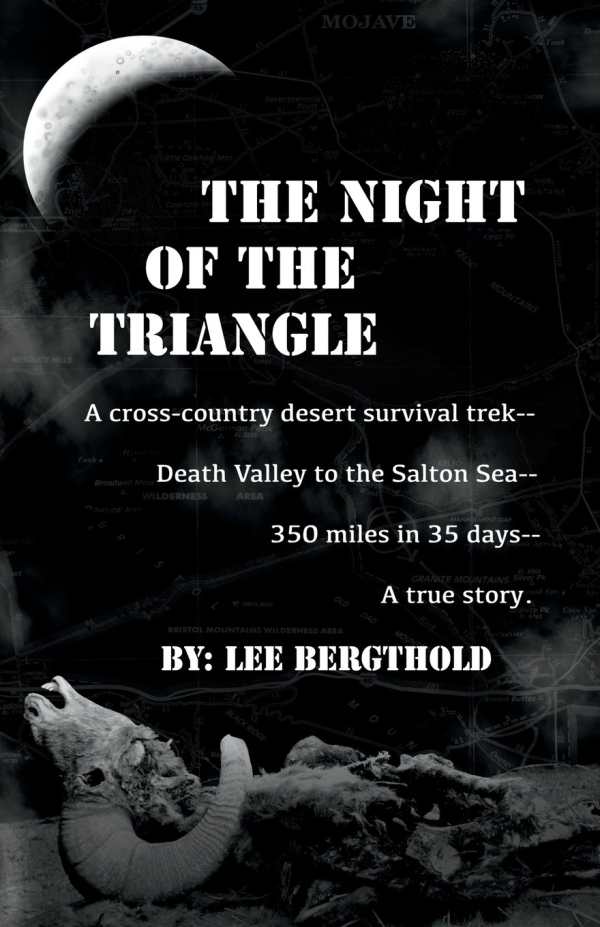The Night of the Triangle
The Night of the Triangle offers keenly observed notes about nature and ideas about team dynamics.
Lee Bergthold’s The Night of the Triangle is the thoughtful and detailed account of a thirty-five-day hike through Death Valley to the Salton Sea. Obviously, at least one of the trio of hikers survived to write this book—the suspense is in how they managed to do so.
Most of the book is about hiking from one point to another in extreme conditions, and the dramatic tension of this memoir comes from the constant struggle for hydration and from surprising encounters—some with people, some with animals (live or not)—in an environment that’s deeply indifferent to human visitors.
Bergthold, with decades of experience in hiking and survival, started to wonder about alternate paths the doomed 1846 Donner Party could have taken. While armchair cartographers could debate possibilities, he and fellow hikers Tina Bowers and Al Caler figure it out with their raw, blistered feet on the ground, in real time. They rely on considerable survival skills, occasional dumb luck, and the kindness of strangers.
A Marine Corps veteran of the Korean War and a guide and teacher who sleeps in a sleeping bag even at home, the author has carved out a life of adventure for himself. When he stares out into the desert, pulling out his harmonica and wondering what’s ahead, careful to not let his team sense any doubt, it feels like the book should be optioned by Clint Eastwood for the movies.
The hikers ration food and food tablets, and end up in a variety of unexpected places, even a serial killer’s old haunt. Small pleasures, like animal encounters or discovering water that enables a full meal of noodles and nuts after days of hard hiking on little sustenance, feel like miracles. Hints at real ghost stories are intriguing but not expanded upon here.
Text includes remembered internal monologue, daydreams about the land’s long history, and extended metaphors to describe the team’s feelings and surroundings. There’s not much dialogue between the three hikers.
Like a good teacher, Bergthold defines hiking slang and tools for the layperson’s understanding. The appendix includes hikers’ maps of the terrain, allowing vicarious adventurers to follow along. Also featured are photographs by the author, whose images have accompanied stories in Backpacker Magazine, and more photos by Bowers.
Some typos and misplaced commas and apostrophes made it into the book, and there are a surfeit of adverbs, sometimes more than one in a sentence. Some chapters start with a quote of something someone says in that chapter, more in the style of a magazine pull quote than a traditional epigraph.
The author’s real art is hiking, and The Night of the Triangle offers keenly observed notes about nature, technical details about long-haul desert hiking, and ideas about team dynamics over an American landscape known intimately by few.
Reviewed by
Meredith Grahl Counts
Disclosure: This article is not an endorsement, but a review. The publisher of this book provided free copies of the book and paid a small fee to have their book reviewed by a professional reviewer. Foreword Reviews and Clarion Reviews make no guarantee that the publisher will receive a positive review. Foreword Magazine, Inc. is disclosing this in accordance with the Federal Trade Commission’s 16 CFR, Part 255.

